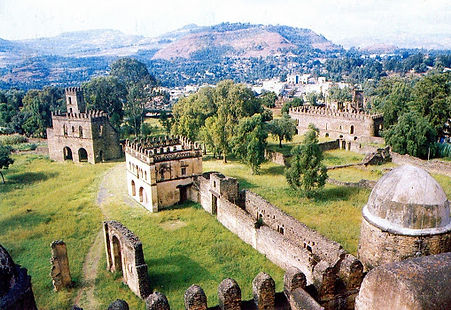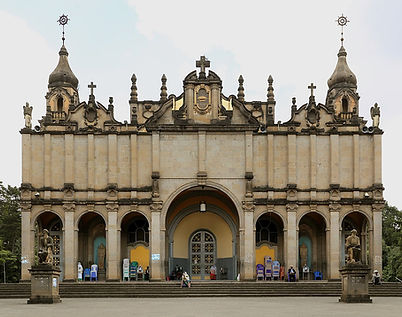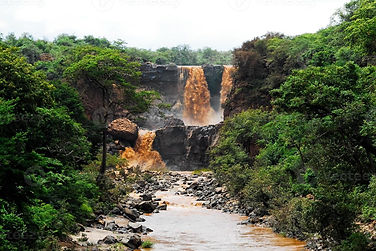91 Windham Rd, Boscombe, Bournemouth BH1 4RN, United Kingdom
Mulugeta Yigzaw PO BOX 1150 Bahir Dar Ethiopia
24/7

LIFE IS GOOD HERE
ABOUT ETHIOPIA
Truly a land of contrasts, from the cool peaks of the Simien Mountains to the searing desert of the Danakil Depression, from the historical northern highlands to the wild free-roaming southern regions, Ethiopia remains a unique destination within Africa and the world.
History in Ethiopia begins with her most famous ancestor, Lucy, who roamed these lands some 3.2 million years ago. The rise of the Axumite Empire in the 1st century BC usually marks the beginning of relatively modern Ethiopian history.
With Christianity introduced to this geographically and culturally isolated country in the 4th century, one can’t help while watching the colorful Orthodox celebrations to realize that these acts of faith and devotion are likely as close to the most original form of Christianity as is present in the world today.
Along with a vibrant history come magical stories and legends that define Ethiopia’s legacy. Join us and discover the richness of Ethiopia’s tradition.

History
Ethiopia has a rich history which goes back at least three millennia. Facts and legends easily mingle and fascinating it is! History plays an important role in tourism in Ethiopia. The Historical Route is a often used as description for any tour which travels to the north of the country. Below we give a very brief overview of Ethiopian history to guide you to our destination pages.


Axumite Empire
A visit to Axum brings you in the heart of the Axumite Empire which ruled Ethiopia and beyond until the 8th century AD. When it started is not known, legends bring it to time of the Queen of Sheba who lived around 1000 BC. The Yeha temple in Tigray is considered pre-Axumite and is dated to 700 BC. Christianity was introduced to the country in the Axumite period and many churches found in Tigray are from this time.
Zagwe Dynasty: Lalibela
The famous rock-hewn churches of Lalibela are build in the 12th century by king Lalibela during the reign of the Zagwe Dynasty. This dynasty was in power from the 9th until the 13th century. Many kings from this period left churches with different architectural styles around Lalibela.


.jpg)
.jpg)
Gondar: the medieval capital
A period without a capital and a strong presence of Muslim conquerors from Harar followed and Christianity came under tread in the Ethiopian Highlands in the 16th century. This is the time when the monasteries in Lake Tana blossomed as a save haven for the many treasuries. After the defeat of the Muslims with the help of the Portuguese, Emperor Susneyos converted to Catholicism. This was not accepted by the people and he abdicated in favor of his son Fasilidas. He reestablished the Orthodox faith and founded Gondar as the capital in the 17th century which remained until mid 19th century.
Modern times
At the end of the 19th century Emperor Menelik II founded Addis Ababa, the current capital of Ethiopia. He and his successors Empress Zewditu and Emperor Haile Selassie left many historical buildings in and around Addis Ababa




Culture
The diversity of people living in Ethiopia is enormous: close to 90 million people divided in over 80 ethnic groups, together speaking over 200 dialects. The relative isolation of the country, never colonized by a foreign power, left a very distinctive identity. Ethiopia is different in every corner!
When Ethiopia is presented as a cultural destination it is usually about the tribes in the south of the country. Although we follow this reasoning somehow, it does injustice to the rest of the country and to the people in the south who are so much more than just a 'cultural attraction'
Language
Four major linguistic groups are present in Ethiopia. People speaking Semitic, Cushitic, Nilotic and Omotic languages. The last group of languages only spoken in Ethiopia in the Omo Valley.


Food and drinks
The Ethiopian food is very typical. The staple food is 'enjera' a huge, bit sour tasting, pancake with a spongy structure. It is made from teff a grain unique for the highlands of Ethiopia. The dish is served with al kind of 'wot': meat or vegetable stews. As there are many fasting days on the Ethiopian calendar, it is a perfect country for vegetarians. And even for vegans as fasting means not to take any animal product, including eggs and dairy products. The often spicy food is washed down with the local beer 'tella' and honey wine 'tedj'


Religion
Ethiopia is a country where religions meet. Christianity is the biggest religion with most people (over 50% of the populaion) following the very own Ethiopian Orthodox Church. Around 34% of the population is Muslim and in the south many people follow traditional beliefs.




Coffee ceremony
Sooner rather than later you will be invited for a coffee ceremony. Coffee originated from the Kaffa region in western Ethiopia. Today it is a big contributor to the economy. Ethiopians are proud coffee consumers, it takes some time to prepare though. The fresh beans are washed and roasted over an charcoal fire. While grinding the beans in a mortar, water is boiled and a first cup of coffee (usually taken with a lot of sugar) is prepared. While enjoying the first serving a second round is prepared by adding extra water in the coffee pot. This is repeated and the ceremony is finished with a third serving which is called 'beraka' (luck) and it is polite to take all three servings. During the ceremony incense is burnt and popcorn and 'kolo', roasted barley, are served as a biting. The floor is covered with fresh grass as a sign of hospitality.
Music and dance
The listing of the unique culture of Ethiopia is endless. Music and dance is also very distinctive and differs from region to region. Instruments like masinko, krar and begena are little known outside Ethiopia. The cultural restaurants in Addis Ababa give a good impression of the music from all over the country, meanwhile you enjoy a wide selection of the delicious Ethiopian food.




Calendar and time
History left Ethiopia with its own calendar based on (but not the same as) the Julian calendar. It consist of 12 months of 30 days and 1 month of 5 days (6 days in a leap year). New year is celebrated on September 11th (12th in a leap year) and the calendar is between 7 and 8 years behind the Gregorian calendar. Hence the slogans: 'Enjoy 13 months of sunshine' and 'Feel seven years younger'
As in more countries near to the equator time is measured in 12 hour cycles starting at sunrise, 6.00 in the morning. 07.00 (7 AM) is 1 o'clock in Ethiopia, noon is 6 o'clock and 18.00 (6 PM) is 12 o'clock.
Visit Ethiopia: the land of 13 months of sunshine and feel 7 years younger.

ETHIOPIA TOP 10 SIGHTS
-
Simien Mountain's - (Rare wildlife, Ras Dashen Mountain).
-
Blue Nile Falls - (Lake, Monastery and River).




-
Erta Ale - (Active Volcano, Lava Lakes).
-
Ras Dashen - (Highest Mountain in Ethiopia).
-
National Museum of Ethiopia - (Art, Culture,Archaeological exhibits).
-
Mount Entoto - (Summit with Churches and Eucalyptus tree's).




-
Awash National Park - (Native Wildlife).
-
Bale Mountains - (Natural area with diverse Wildlife).
-
Mago National Park - (Grassland and Forset).
-
Lalibela - (Rock Hewn Church and Monastery)







